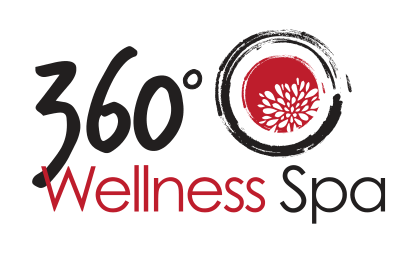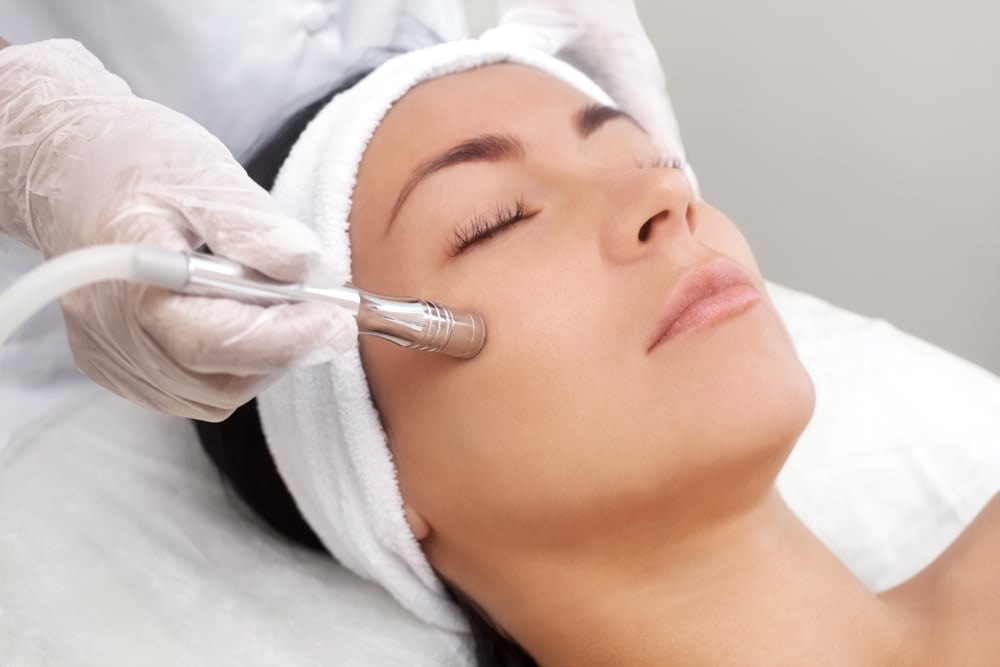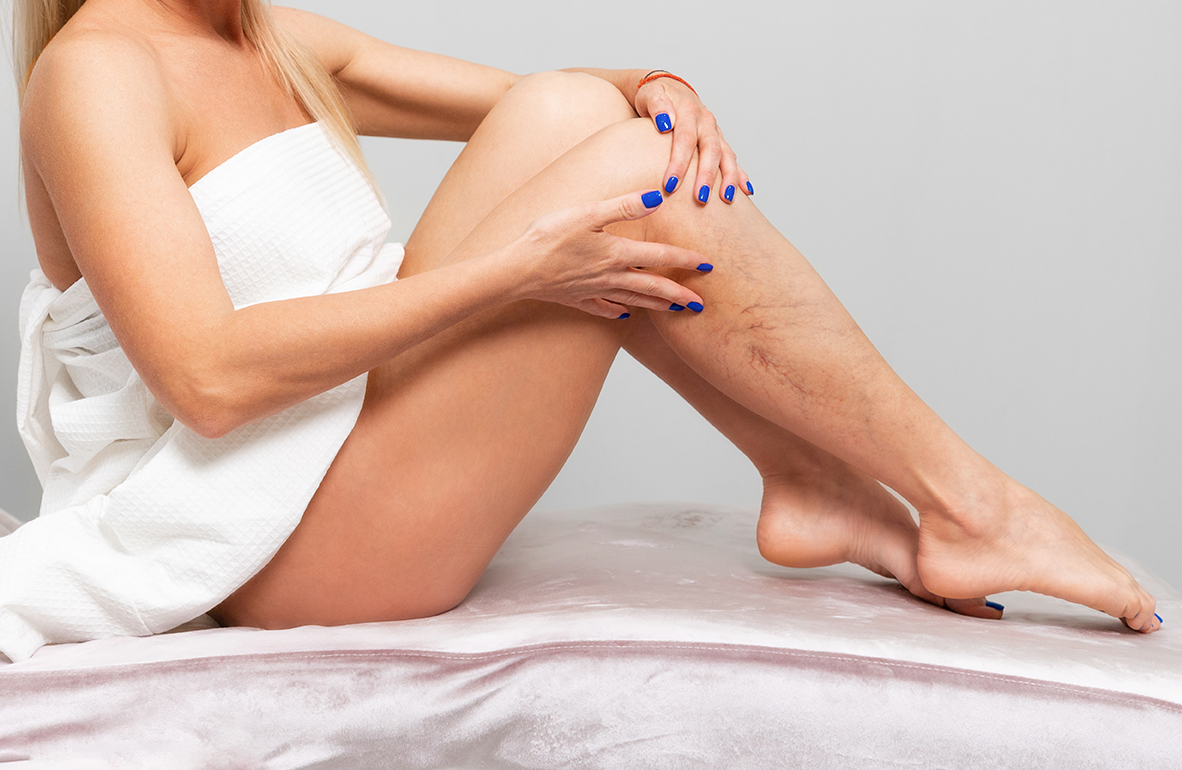Spider veins, also known as telangiectasias, are a common cosmetic concern. They don’t pose a health risk but can cause aesthetic worries and sometimes discomfort. Understanding spider veins, how they differ from the larger and more problematic varicose veins, and knowing the available treatments is essential for those looking to improve their skin’s appearance.
At 360 Wellness Spa in Grand Rapids, MI, we offer specialized treatments for spider veins, providing personalized care for each patient. Our targeted treatments are designed to manage spider veins effectively, focusing on our patients’ specific needs and concerns.
What Are Spider Veins?
Spider veins are small, thin, visible veins that lie close to the skin’s surface. They are called “spider veins” because they often resemble a spider’s web or a tree branch pattern. These veins are typically red, blue, or purple and can be found on the legs, face, or other body areas. While spider veins are harmless and do not cause significant health issues, they can be a cosmetic concern for many people.
What Are the Causes of Spider Veins?
The exact cause of spider veins is not entirely known, but several factors are believed to contribute to their development. These factors can range from the following:
Genetics
If your parents or grandparents had spider or varicose veins, you are more likely to develop them. This genetic predisposition means that some people are naturally more prone to weakened vein walls and valves, leading to the formation of spider veins.
Age
As you age, the elasticity of your vein walls decreases, and the valves inside your veins may start to function less efficiently. These age-related changes can result in blood pooling in the veins, causing them to enlarge and become visible as spider veins.
Hormonal Changes
Hormones play a significant role in developing spider veins. Women are more likely to develop them due to hormonal fluctuations associated with pregnancy, menopause, and the use of birth control pills, which can weaken vein walls and increase the risk of spider veins.
Pregnancy
In addition to hormonal changes, the increased blood volume during pregnancy can put extra pressure on the veins. This can lead to the formation of spider veins, although they often improve after delivery.
Prolonged Standing or Sitting
When you stand or sit for long periods, the blood flow in your legs can be restricted, increasing the pressure in your veins. This added pressure can weaken the vein walls and valves, leading to the development of spider veins.
Obesity
Carrying extra weight puts additional pressure on your veins, especially in the legs. This increased pressure can weaken the veins and valves, making it more difficult for blood to flow back to the heart, forming spider veins.
Sun Exposure
Ultraviolet (UV) rays from the sun can damage the skin and the tiny blood vessels beneath the surface. Over time, repeated sun exposure can cause these vessels to become more visible as spider veins, particularly on areas of the skin that are frequently exposed to the sun, such as the face and legs.
What Are the Symptoms of Spider Veins?
The primary symptom of spider veins is their distinctive appearance on the skin. Unlike varicose veins, which are larger and bulge above the skin’s surface, spider veins are flat and do not cause the skin to protrude. Other symptoms associated with spider veins can vary from person to person and may include:
Aching or Burning Sensation in the Legs
Some individuals with spider veins may experience a dull ache or a burning sensation in their legs, especially after standing for extended periods. This discomfort is often relieved by elevating the legs or wearing compression stockings.
Itching Around the Veins
The skin surrounding the spider veins can become itchy and irritated. Scratching the area may provide temporary relief but can lead to skin damage or infection if done excessively.
Mild Swelling or Discomfort After Prolonged Standing
Prolonged standing can exacerbate the pressure in the veins, leading to mild swelling and discomfort in the legs. Elevating the legs and taking short breaks to move around can help alleviate these symptoms.
What Are Some Treatments of Spider Veins?
We offer advanced laser vein treatments with the state-of-the-art Lutronic® Clarity™ II laser, eliminating varicose veins, spider veins, and visible blood vessels. This straightforward treatment improves skin appearance, reducing redness and vascular lesions without discomfort or downtime. Quick sessions lasting less than 30 minutes provide pain-free results, noticeable within days. The treatment is customizable, ensuring no interruption to your daily life.
The Lutronic Clarity II laser targets only the problem veins, leaving the surrounding skin untouched, thanks to its precision and safety. It works by applying high-energy laser light to shrink and dissolve the targeted veins, with the body naturally removing the damaged vein over time, leading to clearer skin. This targeted approach preserves skin health and offers a safe, natural, and non-invasive solution to vein-related cosmetic concerns.
Rejuvenate Your Skin and Banish Spider Veins in Grand Rapids, MI
At 360 Wellness Spa in Grand Rapids, MI, we’re dedicated to providing treatments for spider veins tailored to each patient’s unique needs. We employ the latest technologies, such as the Lutronic Clarity II laser, to ensure effective results, aiming for clear and beautiful skin. From your initial consultation to the personalized treatment plan, we’re here to address your concerns and guide you toward achieving your desired skin appearance.
Experience a comfortable and supportive environment as we work together to reduce the visibility of spider veins, enhancing your skin’s tone and texture. For more information or to book a consultation, please contact us online or call us at (616) 466-4972. Let us help you take the first step toward vein-free skin.


